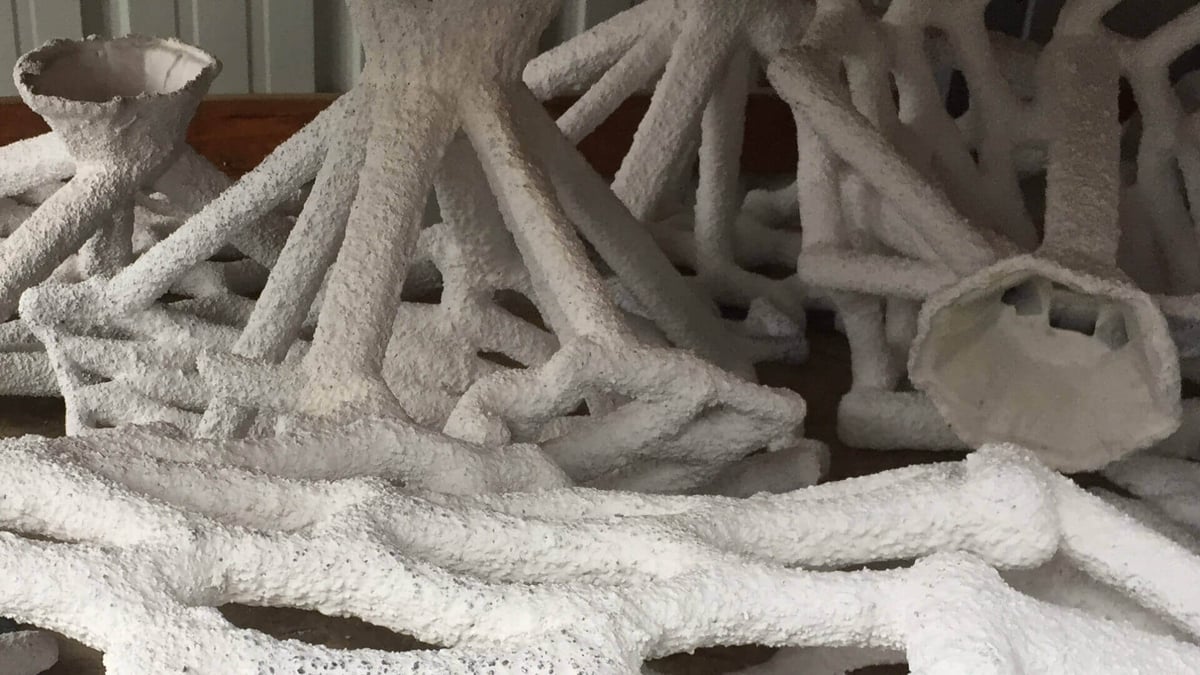Tasked with creating an installation for Georgia Tech’s new Engineering Biosystems Building, Oregon-based artist Julian Voss-Andreae turned to 3D printing to optimize his workflow and create a giant humanoid sculpture.
Showing that desktop 3D printers are capable of realizing concepts much larger than the machines themselves, sculptor Julian Voss-Andreae and his team have created a larger-than-life sculpture with an organic twist. The sculpture, “Mermaid”, is due for installation outside the university’s new facility; a visual representation of the research within.
A creator of organic and scientifically inspired pieces, Voss-Andreae’s work often takes the form of human figures characterised by challenging textures. Mermaid is no exception.
In the shape of a sitting female figure, the piece is totally hollow, with a Voronoi style structure to its shell.
It is cast in bronze because of the material’s longevity and ease of maintenance. Additionally, the long term aim is for natural plant-life to flourish throughout.
In large scale art 3D printing is becoming increasingly common for rendering complex designs into reality.
Voss-Andreae comments on 3D printing:
“I bought my first 3d printers in early 2014 – when the FDM patents had expired leading to an explosion of small, affordable FDM machines. My earlier work was guided by designs that can be pulled off using ordinary steel fabrication. Laser-cutting steel sheet expanded that and many designs came out of that approach. 3D printing is a completely different animal and it is a complex learning curve and feedback cycle to adapt the design process to the new technologies and see what is possible.”
3D Printing Big Art
To create the vast figure, Voss-Andreae employed a bank of eight Luzbot Taz 3D printers to protoype the design. Separated into over 100 smaller parts, the printer cluster clocked up some 10,000 hours of print time.
The actual construction uses the process not unlike lost-wax casting, a common jewelry production method. And the path from print bed to final figure easy to follow.
Fabricating the final design in PLA on the Taz printers, Voss-Andreae’s team then coat the pieces in ceramic material. Once set, the PLA melts away to leave a hollow ceramic negative of the Mermaid’s parts. They then fill this cavity with molten bronze. Following this, when the bronze is solid, the ceramic shell is smashed away.
To finish the sculpture, they then fuse the complex puzzle of bronze pieces together and sandblast it to a pleasing finish.
Speaking to All3DP, Voss-Andreae expounds on the 3D printing workflow as an artist:
“I experimented with using PLA for direct metal casting and at this point I am able to do it pretty well. After dialing in that workflow, the design process has expanded greatly – it is the tools that expand the artistic vision. Now I use different 3d printing technologies, mostly depending on my need for resolution and if the design allows for removal of support structure or not.”
But this isn’t the only and end of 3D printing in his works. Voss-Andreae is currently working on several projects that use the tech, including a 10-foot tall private commission. Like the Mermaid, this will be cast in bronze, but the 3D printing will be handled on Voxeljet machines.
Source: Lulzbot

License: The text of "Artist Uses 3D Printing to Create Giant Metal Voronoi Sculpture" by All3DP is licensed under a Creative Commons Attribution 4.0 International License.